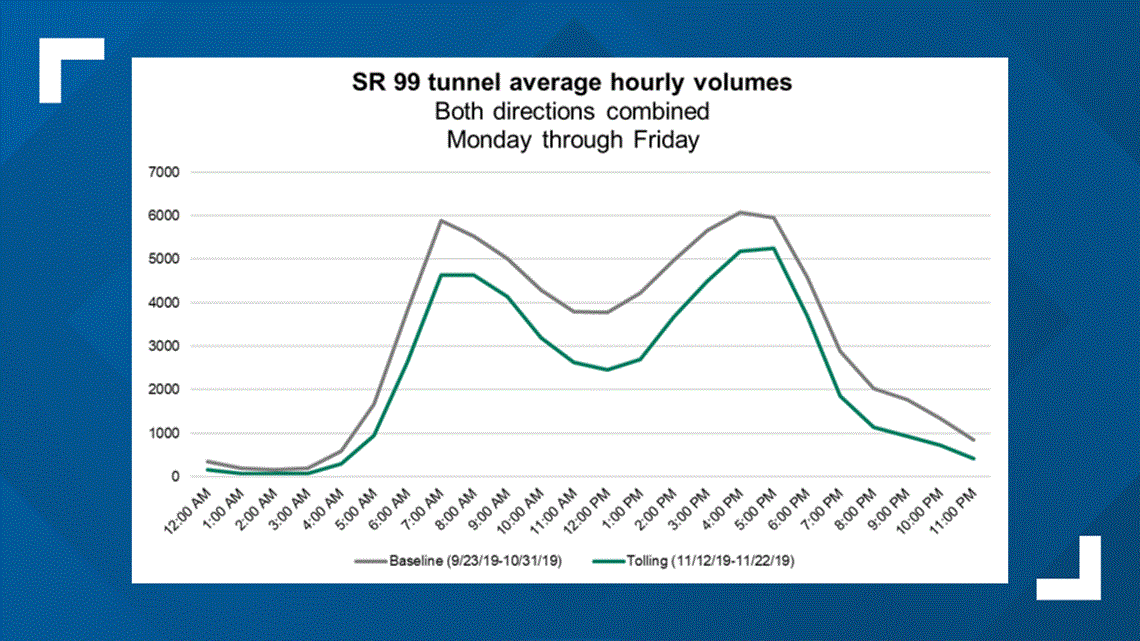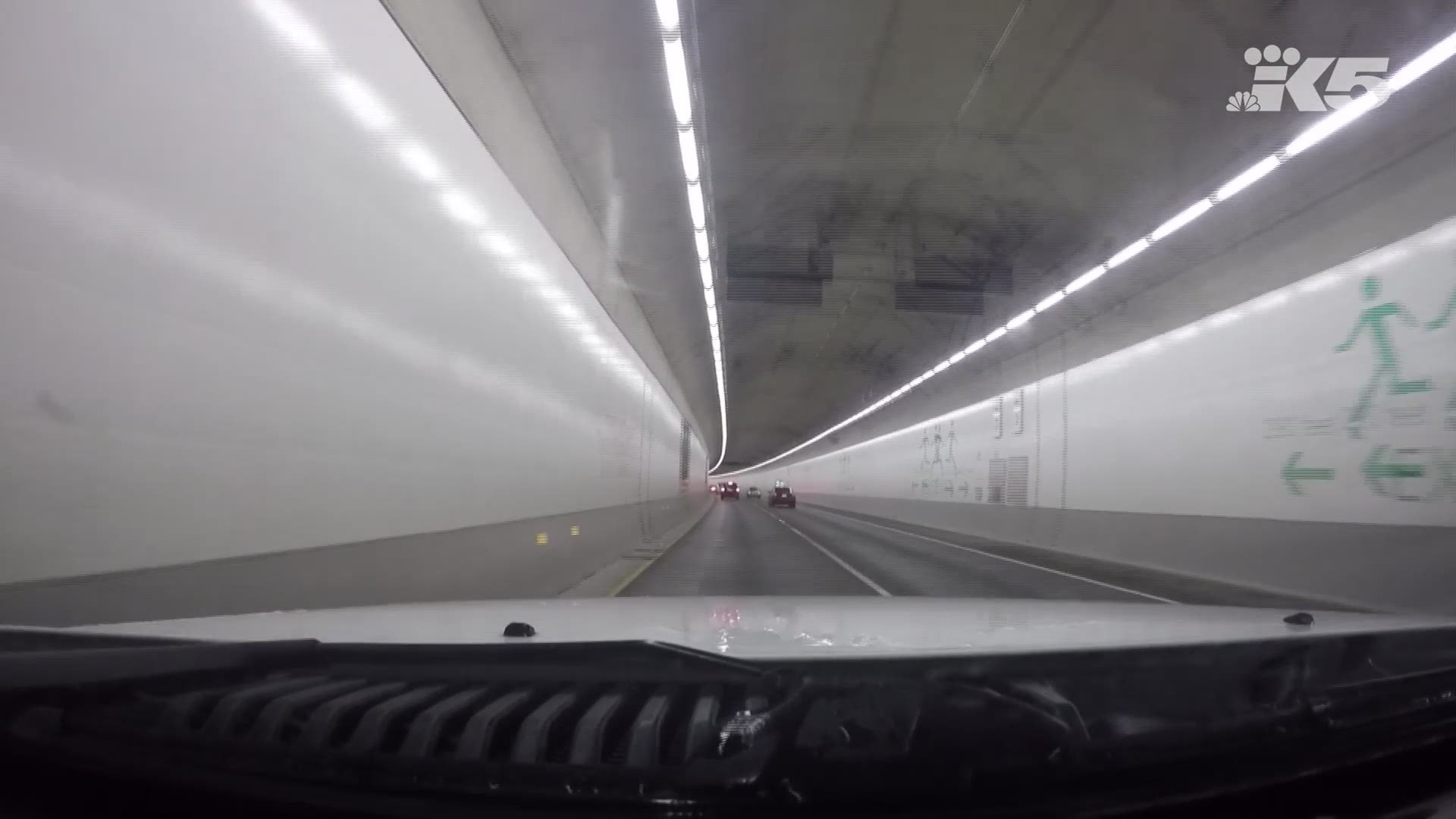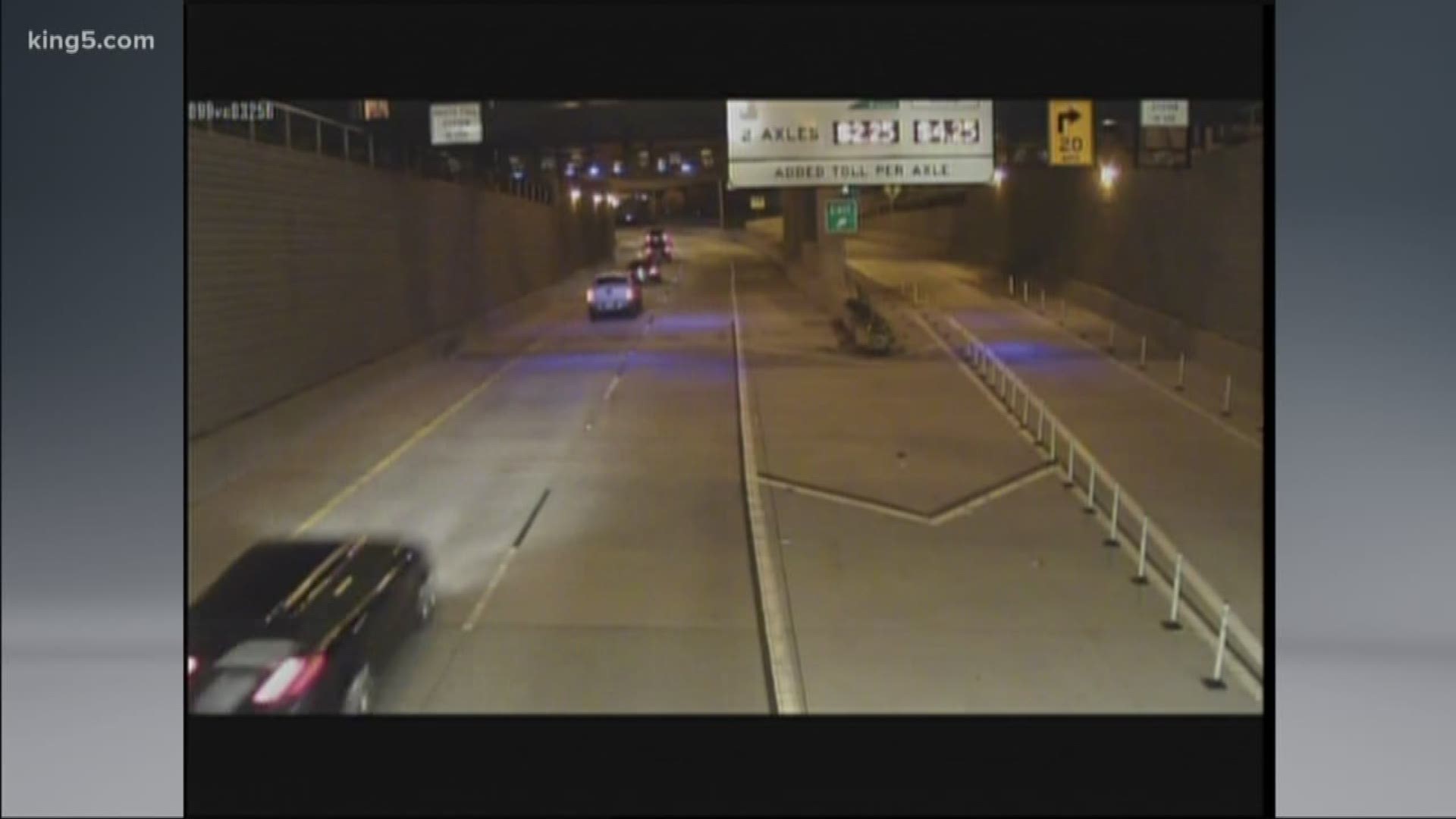SEATTLE — Roughly 20,000 fewer vehicles use the Seattle SR 99 tunnel on any given weekday now that tolling is underway, according to initial data.
That's about a 26% decrease in usage compared to when the tunnel was free. Prior to the start of tolling on Nov. 9, about 77,000 vehicles used the tunnel during "average weekdays," according to the Washington State Department of Transportation.
Weekday traffic volume data collected from Seattle-area transportation agencies reflects the time frame of Nov. 12 through Nov. 22.
The decrease of 22,000 vehicles is less than expected, according to the state. State and city transportation officials were preparing for a diversion rate of at least 30% and up to 50% of all the vehicles that previously used the tunnel.
Traffic volumes on city streets increased since tolling in the tunnel began, according to the state. But "to date, travel times and reliability are not greatly impacted." During the first two weeks of tolling, about 5,000 more vehicles used Alaskan Way, resulting in an increase in travel times by 3-4%.


The state notes it's common for traffic volumes on Seattle streets to fluctuate by up to 20% on any day.
The number of vehicles using I-5 during the first two weeks of tolling the tunnel "were within normal ranges for this time of year," according to the state, which notes there were days when drivers experienced longer commute times during the morning and afternoon.
"This can be attributed to a number of factors including weather ... blocking incidents such as collisions or stalled vehicles, and even special events," according to the state.
Since the viaduct closed, bus routes that used it are seeing increased travel times. Between October and November, average travel times increased during peak hours. For example: inbound travel times on average were unchanged for Route 120, 1.5 minutes longer for Rapid Ride E Line, 2 minutes longer for routes 40, and 3 minutes longer on Route 131, according to the state. Outbound travel times on average were less than 2 minutes longer for Route 120, nearly 4 minutes longer for Route 131, and 5.7 minutes longer for Route 62, and 2 minutes longer for Route 40.
The state says factors other than tolling may "partially explain" increased travel times, including less daylight, increased ridership, weather, and other factors.


